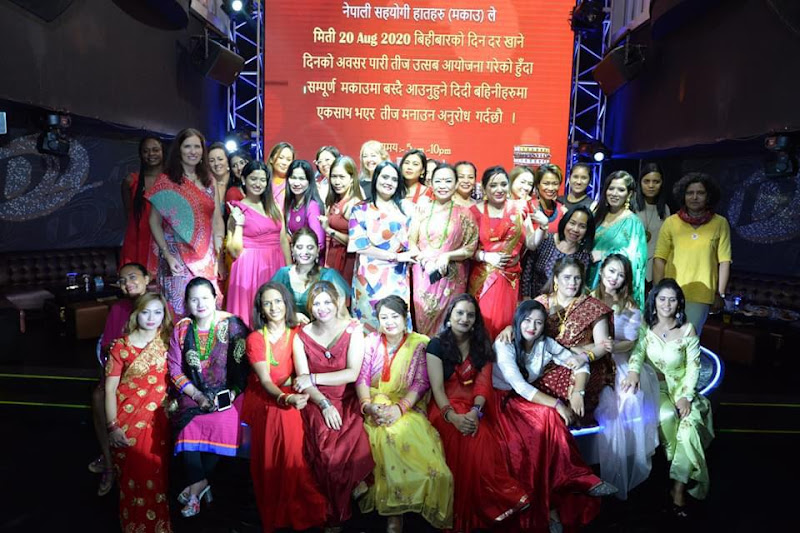"Historical tunnel canal "
Location of Tunnel Canal
"The face of the New Manakamana Boarding School is located beneath the Tunnel Canal, in Ward No. 1 of Vyas Municipality, Damauli, the district headquarters of Tanahun. As you go towards Bhadgaun from Amarapuri, crossing the solid motor bridge over the Buldi Stream, you will reach the New Manakamana Boarding School. Just around 100 meters after this boarding school, you can see the remains of an ancient Tunnel Canal, which was open on both sides until a few years ago, as told by the locals living in this area. Currently, only the western side (side facing the cliff) of this canal is open, while the eastern side remains closed. Houses have been constructed above this Kulo now. The area where the Kulo is located has a built-up surface above the opening.
This Kulo has historical significance in the context of Tunnel Canal. According to the locals of Myagdi Rural Municipality Ward No. 7 (formerly Manpang VDC Ward No. 8), Prayag Datt Vagle, born in Dharapani, pleased the King Surendra Bir Bikram Shahdev by putting a kharauni (wooden sandal) and saying, 'Whatever you hide, it's all yours.' After that, Prayag Datt Vagle, using a kharauni, marked the area by hitting it with a plough for as far as he could reach. The locals say that this marked area with a plough, including the public lands, came under the ownership of Prayag Datt Vagle. This story has been passed down by the elderly in the area. According to them, Gandharvas, who come during Dashain to sing songs, also mention this story. They share this tale, and the Gandharvas sing songs related to this during Dashain. The Gandharvas have learned about this from the ancestors of the locals. When Prayag Datt goes somewhere, people ask him about his identity and the status of the land. He used to narrate this in a poetic style, as if he had composed a poem, which is still remembered in Tanahun as a saying."
मनपाङ्को देउराली मादिको छाल,
अनमर्ने खोलो गड्याया साल
यो सेरोफेरो
सबै मेरो
Anamarne Khola means the stream flowing from Jamune to Khairain via tharpu Bazar.
 |
| "Showing the location where the other opening of the Surung Kulo has been made, Hom Bahadur Rasailee and Dhan Bahadur Darai." |
The land acquired by pleasing the king, where now Nirmal Secondary School stands, also had a taro field. The purpose behind this land was to start the construction of a channel to divert water from the buldi (spring) for irrigation. The construction work of the channel began with the intention of irrigating the land. However, the construction work of the channel was not completed, and after 32 years, when the person who initiated the work passed away, the construction was halted by his descendants. There were five channels built in Bhadgaon (now Nirmal) to irrigate rice fields, constructed by the same person who started the channel construction. After Prayag Datt Vagle's demise, those channels were contested by his descendants at the same time as the original construction. Vagle's channel was destroyed gradually, similar to the way Vagle himself used to fight. The saying goes, "Wagle's channel leaked just as Wagle himself used to leak," वाग्लेका ढिकी लडे झैं लडे । वाग्लेको ढिकी फुक्लिए झैं फुक्लिए as described by late Shiv Prasad Wagle.
The construction date of this Surung Kulo is not officially documented. Based on conversations with local residents, it is understood that the renowned poet Bhanubhakta Acharya was contemporary to Prayag Datt Vagle, who initiated the construction of this Kulo. Bhanubhakta Acharya was born in 1871 AD, and it is estimated that this Canal was built around 1900 AD. The term "writer" is used to refer to the Rana period, and it is presumed that the construction began during the Rana regime, which coincided with the rule of King Surendra Vikram Shah and the rise of Jang Bahadur Rana.
According to local residents, Dhan Bahadur Darai and Hom Bahadur Rasaili, a committee member of the Bhanubhakta Acharya Campus, have shared that the Kulo was designed in such a way that torchlight could be seen from one end to the other, sound could be heard from outside, and sunlight could penetrate inside.
Regarding the location, it is mentioned that this Kulo is the first of its kind in Nepal, constructed for personal use but now considered public property, with its construction being a unique blend of traditional and modern techniques. The usage of modern technology and facilities inside the cave enhances the overall experience for visitors.







Comments
Post a Comment